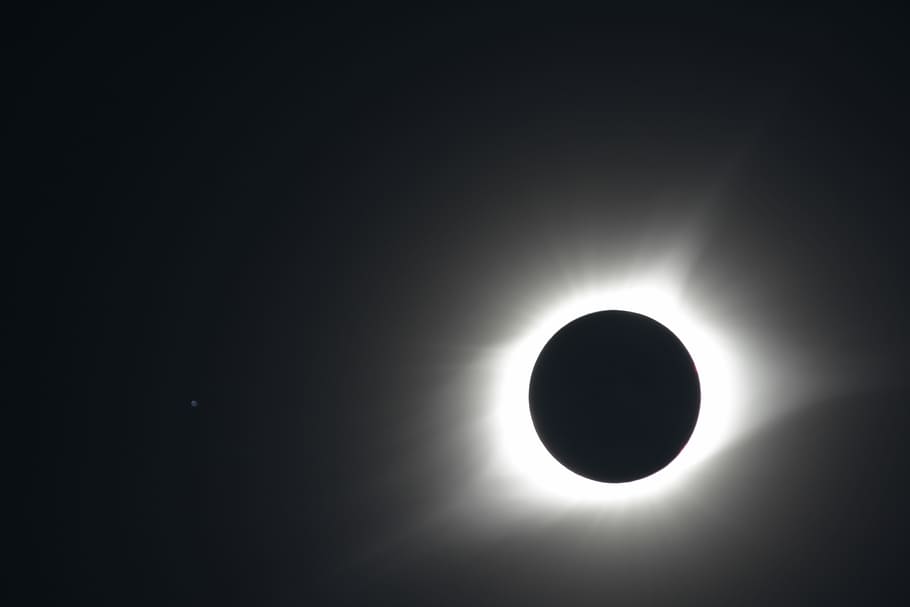The lunar eclipse is one of the most awe-inspiring celestial spectacles that humans have ever witnessed, and this fascination with the heavens dates back throughout human history. The mesmerizing sight of the Moon transforming from its bright brightness to a dark reddish tint has long captured the imagination of people from a variety of cultural traditions all across the world. On the other hand, one can ponder the reason why lunar eclipses do not take place with each and every full moon. This question encourages us to investigate the complicated dance that is performed by heavenly bodies and to discover the mechanisms that lie behind these astonishing occurrences.
Understanding the Lunar Eclipse In order to explain the physics of this heavenly display, which is why lunar eclipses do not always occur during the same full moon, we need to first understand why full moons do not always coincide with lunar eclipses. When the Earth moves in between the Sun and the Moon in such a way that a shadow is cast on the Moon’s surface, this phenomenon is known as a lunar eclipse. As a result of the relative positions of the moon, Earth, and Sun during an eclipse of the moon, there are three distinct kinds of lunar eclipses: complete, partial, and penumbral.
The Moon’s orbit around the Earth follows a path that is slightly tilted relative to the plane that represents Earth’s orbit around the Sun. This plane is known as the ecliptic plane. The tilt of the Moon’s orbit plays an important role. Because of this very minor inclination, when there is a full moon, the Moon will most of the time either pass above or below the Earth’s shadow, meaning that there will be no lunar eclipse. During a total lunar eclipse, the Moon is not visible anywhere on Earth except for a small region called the umbra, which corresponds to the shadow cast by the Earth.
The Nodal Period of the Moon The nodal period of the moon is another component that contributes to the random occurrence of lunar eclipses. The orbit of the Moon undergoes a slow process known as precession, which causes its orbital plane to gently spin over the course of 18.6 years. The prediction of eclipses is made somewhat more difficult as a result of this movement. The lunar nodes are the spots on the Moon’s orbit where it crosses the ecliptic plane. These points are sometimes referred to as the nodes of the moon. In order for a lunar eclipse to take place, it is necessary for a full moon to occur at the same time as one of the lunar nodes. As a result, if there is a full moon while the moon is located at a significant distance from the nodes, there will not be a lunar eclipse.
Seasons of Eclipses The incidence of lunar eclipses has a tendency to cluster into distinct times of the year that are referred to as eclipse seasons. When the Sun, Earth, and Moon are in tight alignment with the lunar nodes, we experience these four distinct seasons approximately once every six months. It is possible for there to be anywhere from two to three lunar eclipses throughout an eclipse season; however, not all of them will be seen from every location on Earth. In addition, a lunar eclipse does not happen at each and every full moon that occurs throughout an eclipse season because of the conditions that were discussed before.
The Moon’s Orbit Takes on Several Different Dimensions:
The Moon does not travel in a completely circular path around the Earth; rather, its orbit is more elliptical in shape. The distance that separates the Moon and the Earth can shift between its closest point, known as the perigee, and its farthest point, known as the apogee. When a full moon occurs at the same time that the Moon is at its apogee, the size of the Moon as seen in the sky will appear to be significantly diminished. As a consequence of this, when these “micromoon” events occur, it is possible that the Moon will not be completely enveloped in the shadow cast by the Earth during a lunar eclipse. This could result in a penumbral eclipse or no eclipse at all.
In conclusion, lunar eclipses are interesting astronomical occurrences that capture our imagination and hold our attention. However, because of a number of different reasons, they do not take place at each and every full moon. The tilted orbit of the Moon, which contributes to the sporadic nature of lunar eclipses, the lunar nodal period, and the various diameters of the Moon’s orbit are also contributing factors. The more we learn about these complex mechanisms, the more we can appreciate the uncommon astronomical events that they represent. They also serve as a reminder of the ever-changing dance of celestial bodies, which never ceases to amaze and fascinate us.
![]()
